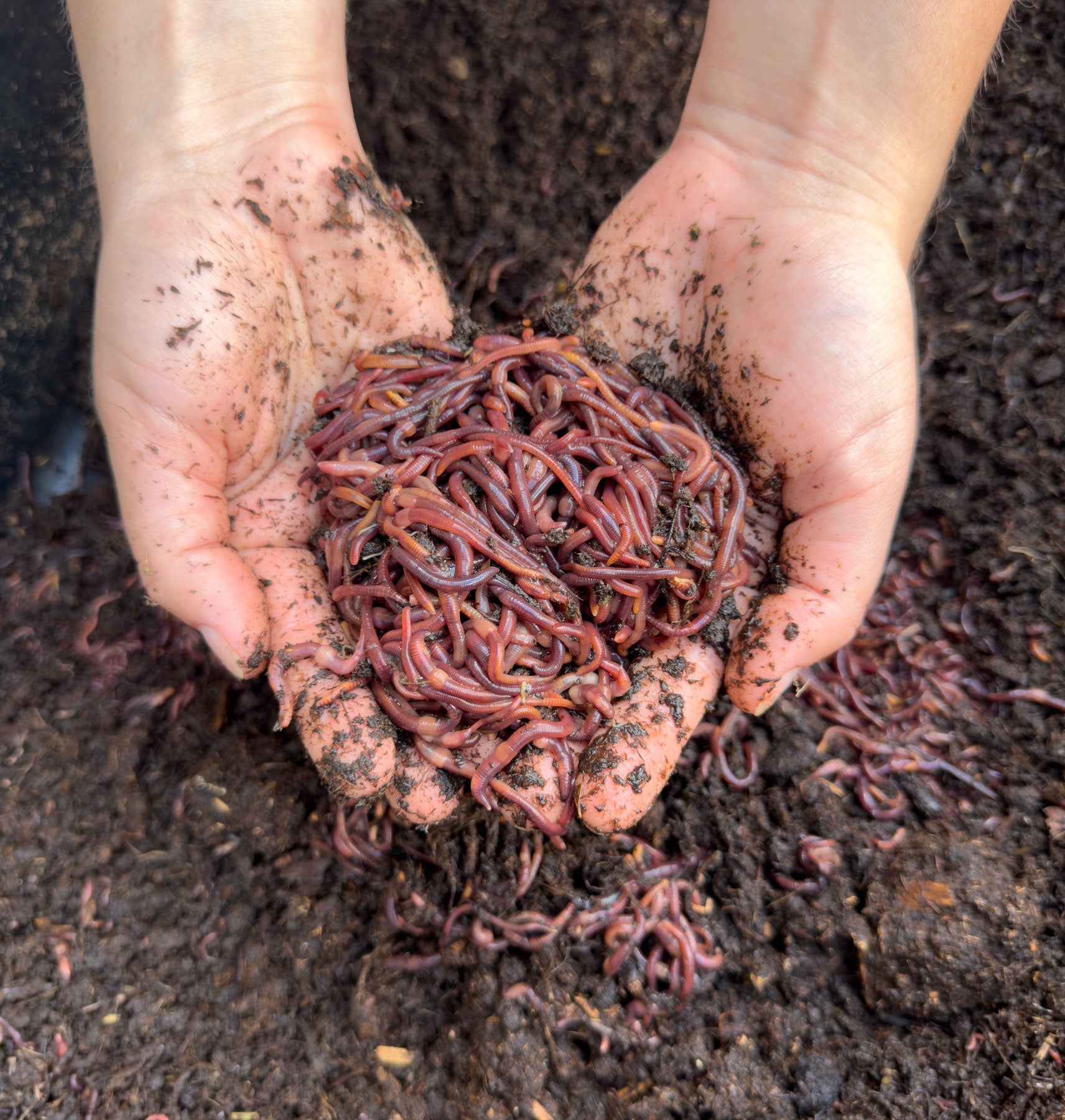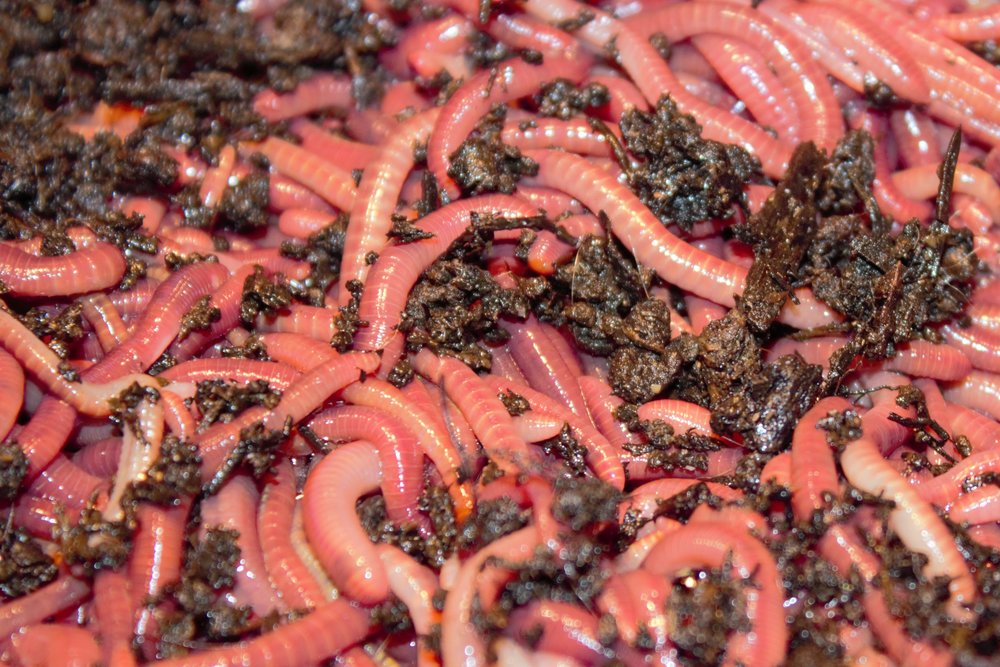Nutrient-rich red worms: Great for gardens
Wiki Article
Change Your Yard With Red Wigglers: Tips and Tricks
By establishing a fundamental worm container and comprehending the nutritional needs of these impressive creatures, gardeners can significantly boost soil top quality and plant health. The procedure of transforming organic waste right into rich, productive castings is both simple and satisfying.
Benefits of Red Wigglers
Red wigglers, medically called Eisenia fetida, are usually hailed as nature's composting champions. These amazing worms serve a number of essential advantages that can dramatically enhance garden health and productivity. First of all, they are effective decomposers, damaging down natural product such as kitchen scraps and backyard waste right into nutrient-rich vermicompost. This all-natural plant food enhances the soil, promoting healthy plant growth and enhancing dirt structure.
An additional noteworthy advantage of red wigglers is their capability to minimize waste. By composting natural products that would certainly or else add to land fill waste, they play a crucial function in sustainable gardening practices. Integrating these worms into your gardening routine can lead to raised returns, healthier plants, and a more lively garden environment, making them invaluable allies for garden enthusiasts looking for to improve their ecological impact.
Establishing a Worm Container
Developing a worm container is a crucial step for anybody aiming to harness the benefits of red wigglers in their gardening efforts. An ideal worm bin can be made from numerous materials, including plastic containers, wooden dog crates, or readily offered worm containers. The first consideration is dimension; a bin that is at the very least 2 feet vast, 3 feet long, and 1 foot deep is usually optimal for a tiny to tool variety of worms.It's essential to develop a bed linen layer, using materials such as shredded newspaper, cardboard, or coconut coir to give a comfortable environment for the worms. The bed linen must be damp however not soaked, resembling a damp sponge - red worms.
Place the bin in a place that maintains a constant temperature level, ideally in between 55 ° F and 77 ° F. Avoid straight sunshine or severe cold, as these conditions can damage the worms. As soon as the bin is established, permit the bedding to opt for a couple of days prior to presenting the red wigglers, guaranteeing they have a successful setting in which to prosper.
Feeding Your Red Wigglers
Once the worm container is established and the red wigglers are presented, correct feeding comes to be key to preserving a healthy and balanced worm populace. Red wigglers grow on a diverse diet regimen, mostly including kitchen scraps and natural products. Perfect foods consist of vegetable peels, fruit scraps, coffee premises, and crushed eggshells. It is critical to avoid feeding them meat, dairy products, or oily foods, as these can create unpleasant odors and draw in parasites.When introducing food, cut the scraps right into smaller pieces to facilitate quicker intake. In addition, bury the food beneath a layer of bed linen product to prevent fruit flies and other nuisances. Monitor the feeding regularity; a general guideline is to provide food read review every 1-2 weeks, depending upon the number of worms and the amount of food waste generated.

Collecting Worm Spreadings
Exactly how can you tell when it's time to gather worm spreadings from your bin? The preparedness of worm spreadings is suggested by a couple of key indicators.An additional indicator is the reduction in worm activity; as the castings collect, worms have a tendency to migrate in the direction of fresher food resources. If you notice a decrease in worm activity and the visibility of spreadings at the bottom of the bin, it's a clear signal that harvesting is due.
To gather, carefully scoop out the spreadings, making sure to decrease disturbance to the worms. A preferred technique includes separating the castings using light; worms often tend to delve away from the light, enabling you to gather the spreadings a lot more quickly.
Gathering consistently, about every 3 to 6 months, makes sure a consistent supply of this nutrient-rich amendment for your horticulture undertakings. Remember, the high quality of your castings straight impacts the wellness of your plants.
Using Spreadings in Your Yard
(red wigglers for sale)Making use of worm spreadings in your garden can substantially improve soil health and wellness and plant development - red worms. These nutrient-rich natural fertilizers give essential macro and trace elements, improving the general fertility of your soil. By including worm spreadings into your garden beds, you can advertise beneficial microbial task, which assists in nutrition availability and enhances soil structureTo use worm castings efficiently, mix them right into the top few inches of dirt before planting. You can create a nutrient-dense liquid fertilizer by steeping worm spreadings in water for a week, after that using the resulting "worm tea" directly to your plants.
Worm castings additionally boost wetness retention within the soil, decreasing the requirement for regular watering. Routinely incorporating worm spreadings right into your horticulture routine can lead to robust plant development, raised returns, and a general much healthier garden community.
Verdict
By establishing a worm bin, providing proper food, and consistently harvesting nutrient-rich spreadings, garden enthusiasts can cultivate a lasting environment. The use of worm castings and "worm tea" better contributes to moisture retention and nutrient availability in the dirt.Report this wiki page